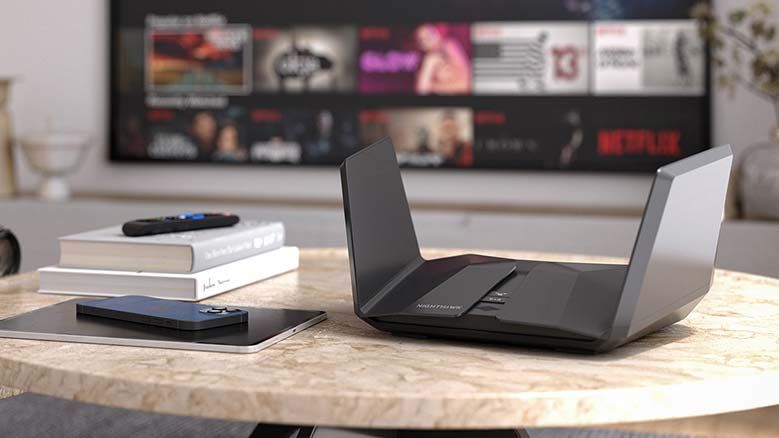
To make sense of what Netgear is saying there, think of your fancy Wi-Fi 6E phone as an Olympic swimmer. "Less traffic on the 6GHz band gives you lower latency for your AR/VR gaming and other Wi-Fi-intense applications," Netgear writes in its data sheet for the RAXE500 (PDF).

#Wifi 6e router uk movie
Latency measures the time it takes, in milliseconds, for your connection to reach its destination and return with whatever data you need to send an email, stream a movie or do anything else online, and it is indeed supposed to improve on the 6GHz band. That's not great given that the 6GHz band is replacing one of the 5GHz bands on each of these tri-band routers, and in doing so, driving the price up.

Regardless, with either router running my network, if you handed me that Galaxy S21 - which, again, is one of the only Wi-Fi 6E client devices on the market right now - and asked me to make a video call while wandering around my house, I would use the 5GHz network, not 6GHz.
#Wifi 6e router uk download
Pretty much the same exact results, although the 6GHz and especially the 5GHz band hit download speeds that were noticeably faster in that back bathroom dead zone. Then again, maybe it's just a Netgear thing? Nope. My home is too small and speeds capped too low to notice it with the downloads, but it's clear as day with the uploads, and the shortcoming would only grow more significant in a larger space with a faster connection. That's because the 6GHz band offers less range than the 5GHz band. The green 5GHz speeds held up pretty well as I moved away from the router - but look at the way those yellow 6GHz upload speeds immediately start to drop off. Those are my average upload speeds from the same batch of tests. Why? Move your eyes over to the graph on the right. Speeds on both bands plummet in the dead zone that is my back bathroom, and 6GHz did a little better here, but that's about the only advantage I could find - and it's fool's gold as far as advantages are concerned. That's great, but the green bars representing my 5GHz speeds were just as impressive. The yellow bars representing my speeds on the router's 6GHz band show that it was able to push my connection beyond the max, with average close- and medium-range speeds as high as 375Mbps. To measure speeds, I used a Samsung Galaxy S21, which supports 6E and can connect on the 6GHz band. My home is a boxy, 1,300-square-foot shotgun-style house, and my fiber plan from AT&T nets me top speeds of up to 300Mbps. On the left, you have the average download speeds on each of the router's three bands throughout five spots in my house, arranged from closest to the router to farthest from it. In fact, you could argue that the 5GHz band would actually be preferable for most, if not all of your regular network traffic. There are very few devices currently equipped to take advantage of it at this point - and even if you've got one of those, you aren't likely to see performance that's noticeably better than what you'd see on the 5GHz band anytime soon.

What's the problem, then? It's that 6GHz band. (Asus says the GT-AXE11000's 6GHz band goes even higher, topping out at just above 5 gigs.)Īt $550 for Asus and $600 for Netgear, each promises the latest features and top-of-the-line network performance (as well as " total domination" from Asus, in typical gaming router parlance that I'm choosing to read as a direct threat to Tom Holland). In fact, each one boasts top speeds of up to 4,800Mbps - 4.8 gigabits per second - on its 5GHz and 6GHz bands. On the contrary, these are powerful, capable routers that are equipped to bring everything online - old devices, new devices, devices that don't exist yet - at the fastest speeds possible.


 0 kommentar(er)
0 kommentar(er)
